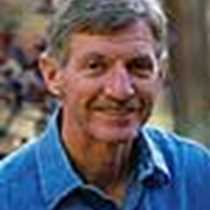Astoria, OR & Beyond
Rain and wind and more rain and wind…now we shall experience some real “Lewis and Clark weather” as our historian Harry Fritz likes to quip. But when our little ship docked in Astoria, Oregon, the sky was fairly clear. On our way to Fort Clatsop, where Lewis and Clark and the Corp of Discovery spent the winter of 1805-06 hunkered down, suffering through the miserable winter weather and tedious boredom, there was just a sprinkle. But then the sun reappeared. Perfect.
This national monument contains a replica of their log “fort,” a collection of small, dark rooms, eight bunks to each bedroom except for the one housing Lewis and Clark and a separate room for Charbonneau, Sacagawea, and their tiny baby Jean Baptiste.
Afterwards we bussed back to town to see the Columbia River Maritime Museum with its excellent exhibits about the treacherous Columbia Bar, where more than 2,000 ships have sunk since the late 1700s. One of my favorite displays was one of the National Guard boats used to rescue 300 or more other boats a year, which was accompanied by a video showing the excitement and danger these men and women face when they go out on a mission. Another room contained the fascinating history of tattoos including some grisly footage showing the tattooing process in different cultures.
After lunch, a few of us crossed the remarkable 4.2-mile-long Astoria Bridge over to Washington to Cape Disappointment. This was the northernmost point that Lewis and Clark went along the Pacific Coast. Today there is a lighthouse and a brilliant visitor center with a terrific view of the Columbia Bar…weather permitting. And today the weather gods were with us. Where Lewis and Clark were pinned down between the raging Columbia estuary and a mountain slope, we enjoyed warm sunshine and calm as we easily bussed along the sea and steep mountains on road fill.
Before returning to Astoria, we stopped to see the three installations designed by renowned artist Maya Lin as part of the Confluence Project. This art project is an initiative to reclaim, transform, and reimagine seven places along the historic Columbia River Basin through art. Each site is a place where waterways merge or traditional peoples gathered, and each was a meeting place between Native Americans and the Lewis and Clark Expedition.
This last full day was one of the best of our voyage and will leave us with pleasant memories until our next trip aboard the National Geographic Sea Bird.




